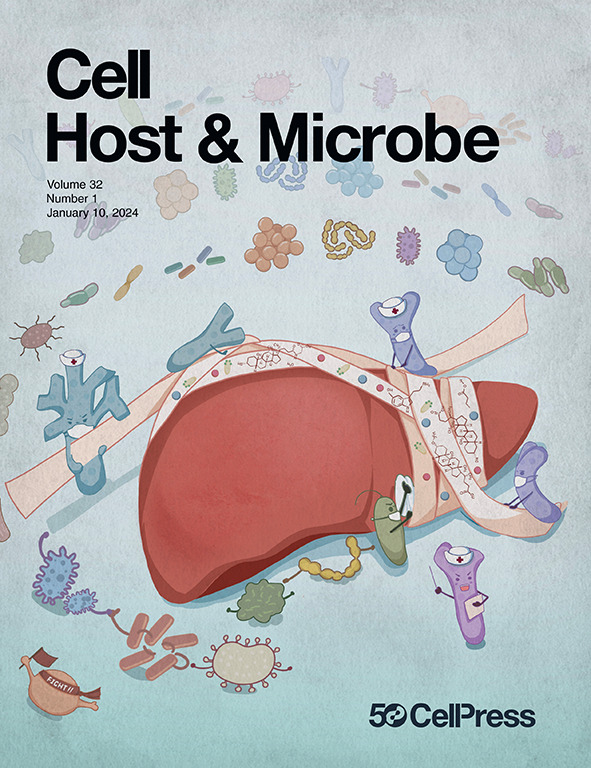废物作为抗菌武器
IF 18.7
1区 医学
Q1 MICROBIOLOGY
引用次数: 0
摘要
细胞内病原体中和和逃避巨噬细胞内在宿主防御。在本期《细胞宿主》杂志中;微生物,Anaya-Sanchez等人表明,糖酵解的代谢副产物甲基乙二醛是巨噬细胞库的一部分,限制单核增生乳杆菌和结核分枝杆菌感染,但被病原体表达甲基乙二醛解毒酶所对抗。本文章由计算机程序翻译,如有差异,请以英文原文为准。
Waste as an antibacterial weapon
Intracellular pathogens neutralize and evade macrophage-intrinsic host defenses. In this issue of Cell Host & Microbe, Anaya-Sanchez et al. show that methylglyoxal, a metabolic byproduct of glycolysis, is part of the macrophage arsenal limiting L. monocytogenes and M. tuberculosis infections but is countered by pathogen expression of methylglyoxal detoxification enzymes.
求助全文
通过发布文献求助,成功后即可免费获取论文全文。
去求助
来源期刊

Cell host & microbe
生物-微生物学
CiteScore
45.10
自引率
1.70%
发文量
201
审稿时长
4-8 weeks
期刊介绍:
Cell Host & Microbe is a scientific journal that was launched in March 2007. The journal aims to provide a platform for scientists to exchange ideas and concepts related to the study of microbes and their interaction with host organisms at a molecular, cellular, and immune level. It publishes novel findings on a wide range of microorganisms including bacteria, fungi, parasites, and viruses. The journal focuses on the interface between the microbe and its host, whether the host is a vertebrate, invertebrate, or plant, and whether the microbe is pathogenic, non-pathogenic, or commensal. The integrated study of microbes and their interactions with each other, their host, and the cellular environment they inhabit is a unifying theme of the journal. The published work in Cell Host & Microbe is expected to be of exceptional significance within its field and also of interest to researchers in other areas. In addition to primary research articles, the journal features expert analysis, commentary, and reviews on current topics of interest in the field.
 求助内容:
求助内容: 应助结果提醒方式:
应助结果提醒方式:


